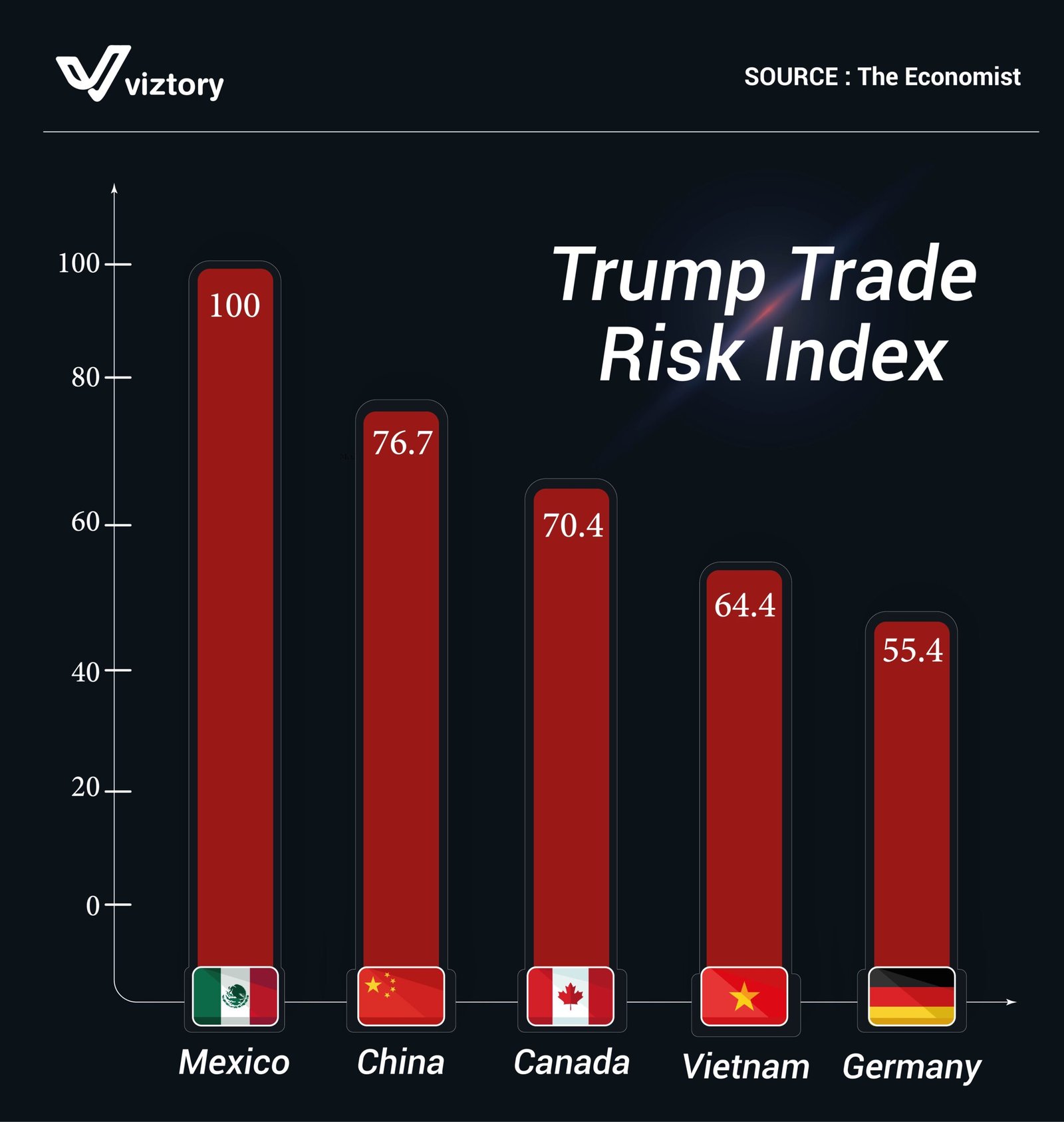The Impact of the Trump Risk Index on Global Trade
-
Aug, Mon, 2024
Published on August 19, 2024
The Impact of the Trump Risk Index on Global Trade
Global trade is one of the core pillars of the world economy, where various economies are interconnected in a complex web of commercial relationships. With the rise of protectionist policies and changes in trade agreements, the risks associated with trade have become more apparent, especially under the policies of former U.S. President Donald Trump.
Trump Risk Index: Trade Challenges
The image presents the “Trump Risk Index” related to trade, which ranks countries based on their exposure to Trump’s trade policies. This index serves as a measure of the economic risks that nations face due to the trade tensions brought about by the protectionist measures pursued by the Trump administration, which significantly targeted U.S. trade relations with several countries.
Key Affected Countries According to the Index:
Mexico (100): Mexico tops the list of countries most affected by Trump’s trade policies. This is mainly due to the renegotiation of the North American Free Trade Agreement (NAFTA) between the U.S., Canada, and Mexico. Tensions primarily focused on issues like the automotive industry and agricultural trade.
China (76.7): China is one of the largest trading partners of the United States, but the trade war between the two nations, which involved mutual tariff impositions, escalated trade risks. These tensions disrupted global supply chains and caused market volatility.
Canada (70.4): As a key partner in free trade with the U.S., Canada was directly impacted by the renegotiations of NAFTA, which eventually turned into the USMCA. Several Canadian industries, such as lumber and dairy products, were at the center of intense disputes.
Vietnam (64.4): Vietnam benefited from the U.S.-China trade war, as many companies relocated their manufacturing operations from China to Vietnam to avoid tariffs. However, Vietnam was not immune to the risks.
Germany (55.4): As one of the largest exporters of automobiles and industrial products to the U.S., Germany faced risks due to threats of tariffs on German cars.
Impact on the Global Economy:
These trade policies implemented by Trump led to a state of instability in financial and commercial markets. The reciprocal tariffs between the U.S. and China, for example, disrupted supply chains and raised production costs. At the same time, this reshaped the global trade map as some industries shifted to other countries to avoid high tariffs.
Additionally, free trade agreements were renegotiated or even canceled, complicating the trade environment and altering trade flows between countries.
Conclusion:
The “Trump Risk Index” reflects the significant impact of protectionist trade policies on the global economy. Trade tensions, tariffs, and the renegotiation of trade agreements have created major challenges for leading nations, disrupted supply chains, and increased market uncertainty.
In these circumstances, it has become essential for countries to adopt flexible and innovative strategies to mitigate these trade risks and adapt to the evolving economic environment.

